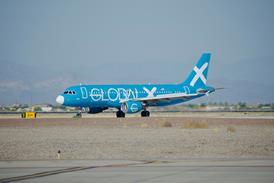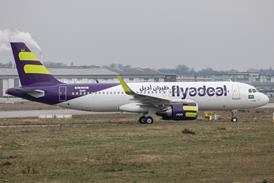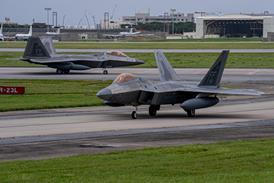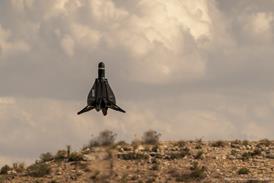US safety investigators have determined that the probable cause of a Pinnacle Bombardier CRJ that overran a runway in April 2007 in Traverse City, Michigan was the lack of a required landing distance assessment by the pilots to determine if the aircraft could land on a contaminated runway.
The CRJ200 (N8905F) ran off the end of Runway 28 after landing in snow at Cherry Capital airport and sustained substantial damage on 12 April 2007. The nose-gear was ripped off, but no injuries among the 49 passengers and three crew were reported.
Investigators during a hearing this week explained that ideally using contamination charts to determine landing distance, as required by Pinnacle's operating specifications, would have shown an unacceptable runway length.
Roughly 16min before landing, the condition of the runway was thin wet snow over patchy thin ice.
In addition to the pilots not calculating the landing distance, investigators also pointed out that airport operators tried to notify the pilots that braking action on the runway was "nil", but the communication encountered interference from a message from air traffic controllers. Later the airport operations supervisor failed to confirm braking condition, investigators noted.
The National Transportation Safety Board says the supervisor's "use of ambiguous and unspecific radio phraseology in providing runway braking information" also contributed to the accident.
It cites fatigue for the poor decision-making ability of the pilots, noting the crew the day of the overrun flew more than 8h with five landings, had been on duty more than 14h and awake for over 16h.
Investigators also pointed out that the pilots had several quick turnarounds during the day, with one lasting only 22min. NTSB board members and investigators say that the domestic short-haul industry in the USA needs to address fatigue management.
They point out that time and duty regulations in the USA are roughly 30 years old, while similar rules in the UK have undergone at least five revisions during that time. The aircraft's captain was also serving as a check airman for the first officer, which also led to fatigue, the board notes in its assessment.
Recommendations by the NTSB to the US Federal Aviation Administration stemming from the investigation include pilot action and decision making during approach, landing distance assessment training, fatigue and weather and field condition information and ground operations personnel communications.
Source: Flight International























